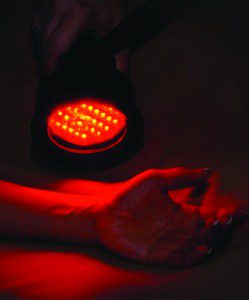By Cyndi Yag-Howard, MD, FAAD


Please keep in mind skin cancer is the most common type of cancer. In fact, nearly half of all newly-diagnosed cancers are cancers of the skin. More than one million skin cancers are diagnosed yearly. Of those, about 80% are basal cell carcinomas, 15% are squamous cell carcinomas and 5% are malignant melanomas. If these cancers are treated appropriately and in a timely manner, they have a cure rate of greater than 95%. The problem arises when these cancers are neglected either because of lack of detection or lack of appropriate treatment.
Treatment with Photodynamic Therapy
Photodynamic Therapy (PDT) is a treatment used for the clearance of precancerous actinic keratoses. It utilizes a combination of a photosensitizing medication and a specific calibrated light source. The medication makes the skin cells sensitive to light. When the area to be treated is exposed to the light, the precancerous cells are destroyed.
PDT is considered an alternative to other precancer treatments such as liquid nitrogen or chemotherapy cream or solution. It can also be used for skin rejuvenation for cosmetic purposes and for acne and sun damage. Currently, our practice utilizes photodynamic therapy for all of these purposes.
What to Expect
The procedure generally starts with microdermabrasion or a scrub to remove the outermost layers of the skin. The photosensitizer cream is applied to the lesions, at times covered with a protective dressing and allowed to absorb into the skin. The medication is preferentially absorbed by the target cells during this incubation time.
The treatment area is then exposed to the light source, at which point you will feel the sensation of tingling and/or slight burning while the medication starts to work.
Recovery involves about seven days with appearance of sunburn-like redness, as well as some flaking and crusting at the lesion sites as the unwanted cells are shed and new healthy ones appear.
For two days after treatment, you will have to avoid sunlight as much as possible, especially covering up the areas of skin treated by photodynamic therapy. Most patients require one or two sessions of PDT.
Benefits of PDT over other treatment options
Studies have shown that PDT has some advantages over other treatment options, such as:
• It has no long-term side effects when used properly.
• It’s less invasive than surgery.
• It usually takes only a short time and requires no long recovery time.
• It can be targeted very precisely.
• Unlike radiation, PDT can be repeated many times at the same site if needed.
• There’s usually little or no scarring after the site heals.
PDT is a safe and effective treatment. It is well tolerated, effective and one of our patients’ favorite treatment options for actinic keratoses and some superficial skin cancers. PDT has also been shown to improve skin texture, pigment, and acne.
At Yag-Howard Dermatology Center, we stress the importance of annual thorough total body skin examinations for the detection of AKs and skin cancers that you may not recognize as abnormal or that lurk where you cannot see. The emphasis of our practice is healthy skin. To learn more about PDT treatment or to schedule an appointment, call 239-529-3376 today.
 Southwest Florida's Health and Wellness Magazine Health and Wellness Articles
Southwest Florida's Health and Wellness Magazine Health and Wellness Articles
